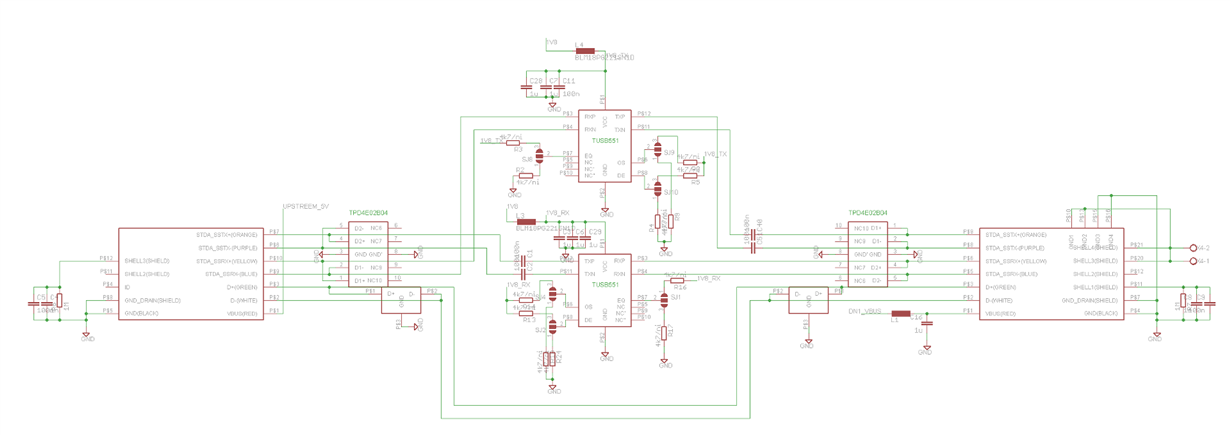Other Parts Discussed in Thread: TPD4E02B04, TUSB1002, TUSB501
Hello,
We have adapted a technical USB3 camera for a medical application. The first prototype pieces were run with high-quality USB cable provided by the camera manufacturer. We have developed a custom board which includes two TUSB551 redrivers to interconnect the camera with a computer (and provide additional control functions). The prototypes seemed to work correctly and reliably. However, in the production version, a USB cable integrated with the camera enclosure is required. The first production camera worked fine, but with the second one we encountered serious problems, from the device not being detected at all, to massive losses of received image frames.
The precise tests of the prototype cameras with detachable cables confirmed that they work reliably with the redriver board only when used with the manufacturer-provided USB cable. On the other hand, we do not encounter any problems with virtually any cable (including ready-made cables from various manufacturers, as well as cables with plugs carefully prepared by us) when the camera is connected to the computer either directly, or through one of two different USB3 hubs (both based on VIA VL813 chip).
In order to exclude problems with our board design, we have tried the TI’s EVM with TUSB522 chip. It behaves virtually the same way as our custom board. We have tried various jumper settings regarding EQ, DE and OS levels in both directions and this only made things worse.
We do not understand why placing a redriver in the signal path makes things substantially worse when compared to direct connection, or connection through a hub. What can be the reason of this behavior? Can we fight it somehow? Or, can you suggest an alternative solution to TUSB551 which would be more reliable and tolerant to cable quality?
Best regards,
Michal


